Revenge of the License: Five Licensed Retro Games That Blatantly Ignored The Source Materials
I've been fascinated by licensed video games for years. Not because I'm a masochist, but because it fascinates me to see how game developers can take the most innocuous and well-meaning properties and almost always convert them into a flaming, excrement-filled dumpster. There is such a thing as a good video game based on some other medium, and not all licensed software is as bad as we've been led to believe. When the studio cares about the work they're doing and aren't given a stupidly short deadline, the results can be enjoyable for all. It's when these studios are forced to make a game they didn't want to make, or even worse, convert an existing title into one featuring characters from a particular franchise, that we get the sort of stuff which made the Angry Video Game Nerd a household name.
Keep in mind that slavish devotion to source material doesn't automatically equal an amazing game. Video versions of Monopoly, no matter how perfectly converted from Parker Bros.' original board game, are still going to end friendships and ruin families. Likewise, just because a game deviates from the source doesn't automatically make it garbage...though it may make you scratch your head a bit. I'm talking about games like:
1) Alien Trilogy (PC/SAT/PSX)
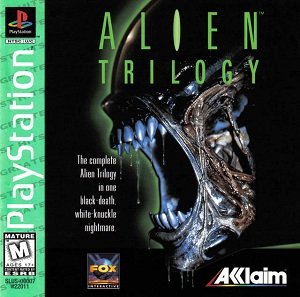
With the exception of Alien: Isolation and a couple Alien vs. Predator titles, I could pad this list with every game based on the spindly xenomorph license and call it a day. Sadly for you, I'm not that lazy.
Alien Trilogy is what happens when somebody looks at a free Doom total conversion mod and thinks, "What if we could do that, only legally so we could make money in the process?" And because the promise of easy money is too great a temptation for software houses to ignore for long, Probe Entertainment got to work before the ink on the contracts had dried.
In all fairness, Alien Trilogy at least tries to pay homage to the source material. The xenos you know and love from the big screen are here: Facehugger, Chestburster, Drone, Warrior, Dog, and Queen are all present and accounted for, so stay frosty and alert. As the only character to appear in the first three films (Alien Resurrection hadn't happened yet), you play as Ellen Ripley. So far, so good...then things go entirely off the rails.
Alien Trilogy does not re-tell the events of the movies, it merely uses their settings as a backdrop to provide an experience akin to "Doom: Aliens edition". It opens similarly to Aliens, with the Colonial Marines infiltrating the colony on LV-426 and getting wiped out in a reasonably decent FMV sequence for the day. The action begins when Ripley picks up her 9mm sidearm and heads out to kick some ass. The problems begin here as well. Take a look at this:
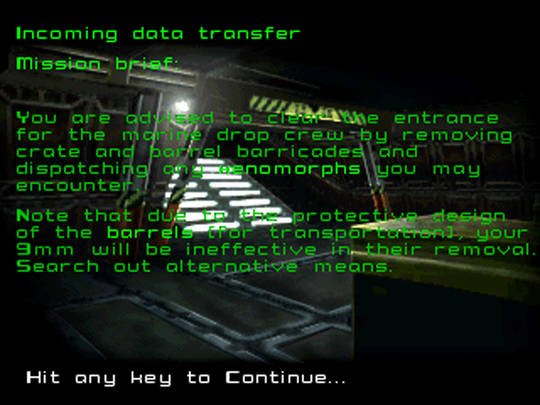
Sir, this place is dead. Whatever happened here, we need Ripley to look into.
That's the mission briefing for the very first level. Now if we're keeping the events of the film in mind, Ripley was promised by Burke that she wouldn't be going in with the troops. Whether Burke was lying about this, or circumstances beyond his control broke the promise, she's still a civilian surrounded by half a squad of trained killers on a mission that's under military jurisdiction. In Aliens, Ripley is placed into an awful situation and forced to work with the marines to better her chances of survival. In Alien Trilogy, Ripley is apparently promoted to the point-woman of the Colonial Marines, tasked with single-handedly clearing out whole sections of the colony so the Marines can sweep in behind her and...what, guard the debris?
Level after level, chapter after chapter, this is Ripley's lot: follow the orders given to her by someone (Goreman? Hicks?) who wants her to advance through the area powering up doors, clearing obstacles, and wasting aliens. I'm sorry, am I honestly supposed to believe a bunch of Marines armed with shotguns, flamethrowers, pulse rifles and smartguns just handed one of the civvies among them a pistol, gave her a pat on the ass, and sent her out into uncharted territory of the hive? Because that's not how that shit works, people. It's not how any of this works.
Alien Trilogy isn't a terrible game. It's a competent Doom clone with some weird controls if you play it on a console, since it pre-dates the DualShock and thus offers no analog stick support. It won't hesitate to punch through your skull or dissolve you in acid if you give it a chance. It also makes a complete hash of the source materials, so if you're looking for an authentic Xeno-busting experience, you'll want to lay down a suppressing fire and fall back by squads to the APC.
2) Predator (NES)

For being a family-friendly console, the NES sure sported a ton of games based on decidedly adult material. Films like Friday the 13th, A Nightmare on Elm Street, and Platoon all graced the system to varying degrees of success. Despite the end result though, it's impossible to accuse any of those games of flat-out ignoring the stuff that spawned them: Friday the 13th stars a group of teens trying to kill Jason at Camp Crystal Lake, Platoon features a squad of soldiers trying to survive in Vietnam, and A Nightmare on Elm Street has Freddy tormenting his victims until they manifest their Dream Warrior powers and go at him. You could write an essay about each one of these games without seeing any of the films they are based on, and while it's unlikely you'd replicate any of the scripts, you'd at least come away with analogous subject matter: Friday the 13th is about kids hunted by a nearly-immortal serial killer with mommy issues; A Nightmare on Elm Street is about a knife-gloved maniac slashing up neighborhood teenagers after they fall asleep; Platoon is about soldiers surviving snipers, booby traps, and night ambushes in a hostile jungle.
Doing so with Predator, by contrast, would result in a mind-melting alternate reality where an unarmed soldier clad in a pink jumpsuit punches scorpions and shoots bubbles in an abandoned ruin while haunted by a sort of half-ghost.
It's no secret this happened because Activision gave developer Pack-In-Video such an impossible timetable for the game's release that PIV simply took a side-scrolling action game they were in the process of finishing and slapped some Predator-themed wallpaper on it so they could meet the deadline. The 8-bit cinematics, featuring scenes digitized from the film (or rather its advertising materials), are exceptionally well executed given the NES's hardware:
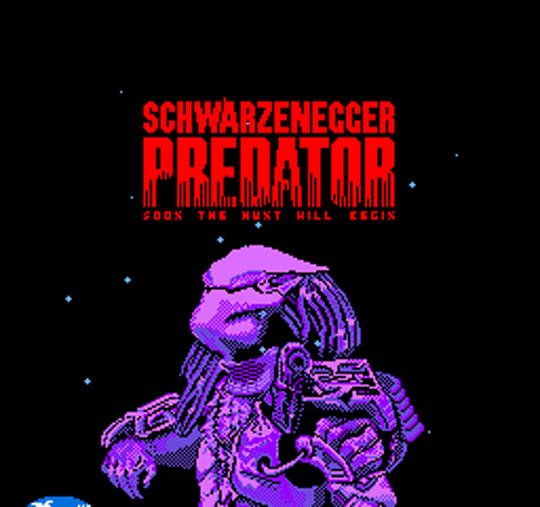
...but the game which follows their introduction has nothing to do with the blockbuster film. To add further insult to injury, there was a home computer version released the same year that features enemies, scenes, and areas ripped right from the film: a downed helicopter, naked bodies strung up from the trees, combat with the guerrilla forces, bodies with spines ripped out, and the Predator's triangular laser tracking sight all show up. You could play the Commodore 64, Amiga, or Atari ST version of this game and come away with an understanding of the film's storyline. The same cannot be said of the NES cart by any stretch of the imagination.
3) Ecks vs. Sever (GBA)
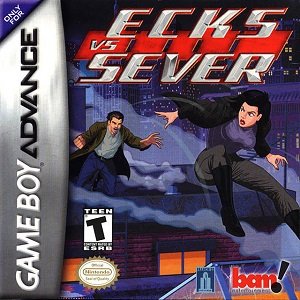
Ecks vs. Sever is rather unique in the world of licensed gaming. Not because of the system it appeared on (the Game Boy Advance), not because of its gameplay style (first-person shooter), but because it's one of the few licensed titles based on a single film to receive a sequel for the most absurd reason imaginable.
The film Ballistic: Ecks vs. Sever was a 2002 flop starring Antonio Banderas and Lucy Liu as assassins from two different branches of government who wind up first warring with one another, then joining forces once they realize they've been double-crossed.
Ecks vs. Sever on the GBA, on the other hand, was released in 2001, a full year before the movie it's named after hit theaters. Usually this happens the other way around, with the game coming out after a film's popularity makes a profit on its production likely, or at least in simultaneous release with the movie in question to drum up support for the film. You'll notice it also lacks the "Ballistic" moniker, for reasons I'll get to in a second.
The game received high praise upon its release, while the movie is the single lowest-rated film in Rotten Tomatoes history, having amassed an astounding 0% positive score aggregated from over 115 separate critical reviews. Other films at Rotten Tomatoes have earned a 0% rank, but only Ballistic: Ecks vs. Sever managed to do so from so many separate opinions.
The Game Boy Advance game permits the player to choose their character for the single-player campaign, which modifies levels, goals, and enemies based on the selection. For example, if the player chooses to play the Ecks side of the campaign, he will cross paths with a grenade-tossing Sever at one point, whom he will have to snipe to cease the flow of explosives. Picking Sever, on the other hand, will present the player with the task of hurling grenades at an AI-controlled Ecks who's trying to blow her head off during the same stage.
Almost nothing in the Ecks vs. Sever game actually happens in the movie upon which it's supposed to be based, but developer Crawfish Interactive has a good excuse for this, seeing as how the game they made was based on an early draft of the screenplay and they were given a 10-month timeframe to get the cart on store shelves. The film, on the other hand, underwent a large number of re-writes, including one that re-cast Sever as a woman, which resulted in a final project with a different title, different characters, and a different ending. Because of this, Ecks vs. Sever received an official sequel entitled Ecks vs. Sever II: Ballistic, which more closely followed the plot of the movie.
Given the film ultimately returned less than $20 million at the box office, fifty million dollars less than its considerably-bloated budget cost the studios, the fact anybody thought to green-light a second Ecks vs. Sever game is hilarious...until you realize the first game was one of the highest-rated GBA titles in the system's history, and proved Crawfish knew how to make a solid FPS even if the film they were tied to was based more on used toilet paper than an actual screenplay.
4) Silver Surfer (NES)
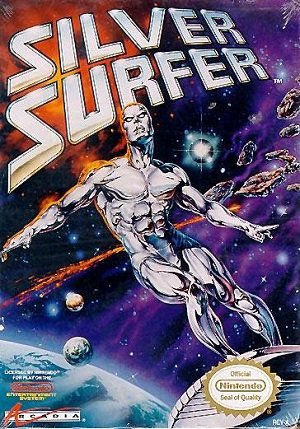
Developing a game based around Marvel's iconic carrier of the Power Cosmic presents the same problems as making one based on DC's Man of Steel: how does one build a game around an invulnerable protagonist with the power of a god and make it any fun at all without shitting all over decades of comic book history? It's a question 1990's Silver Surfer on the NES ultimately failed to answer in the most spectacular way possible: by completely ignoring everything in the canon and going their own way.
For those not in the know, the Silver Surfer is one of the most absurdly powerful beings inhabiting Marvel's pantheon, and that's saying something when you consider Marvel has actual, literal gods from the pages of mythology running around their universe. The Surfer has single-handedly crushed virtually every other top-tier hero, villain, and team in Marvel's history. At one point, all of Asgard's might was insufficient to hold him off. This is a character who needs not eat, drink, breathe, or even sleep; a character who can reassemble himself (and his board) from his own component molecules; survive the vacuum of space and even the crushing gravitational pull of a black hole; generate energy blasts drawn from absorbing the powers of those used against him; move faster than the speed of light, enter hyperspace, and even travel through time. Surfer can obliterate an entire planet with the equivalent of a thought. If Silver Surfer is your enemy, you best hope your name is Thanos or Galactus, otherwise you're in for the worst ass kicking since those girls caught you peeking into their locker room in high school.
So what did Software Creations do once they got their hands on this cosmic-powered icon? Took all those powers away and pretended he was made of tissue paper instead of something denser than vibranium. Watch Mike Matei struggle through a complete death-filled playthrough of the game if you like, since it will explain far better than I can:
I understand not wanting to make your video game a cake walk, which is why many games starring Superman either threaten him with Kryptonite and/or magic so he's more vulnerable than usual, or pit him against enemies like Doomsday and Darkseid who can stand toe-to-toe with him. But Silver Surfer doesn't share this weakness: only Galactus can strip him of his Power Cosmic, and only the most colossally overpowered opponents like Thanos or Adam Warlock could even make him break a sweat. If your only exposure to Silver Surfer was this video game, however, you'd assume he was an ordinary mortal with shiny skin and a critical weakness to bumping into stuff.
5) The Blair Witch Project trilogy (PC)

The Blair Witch Project, for those who somehow avoided a cultural milestone in indie cinematic history that's been parodied and ripped off endlessly since its arrival in 1999, is about a trio of college students who set off into the woods of Massachusetts in search of the truth concerning an urban legend and are never seen or heard from again until searchers uncover footage they were shooting for their documentary a few years later. It might be Cannibal Holocaust lite, but the film scared the bejeezus out of pretty much everybody thanks to not just the performances of its three unknown leads, but also due to an ad campaign designed to make it look like Artisan Entertainment was releasing an honest-to-god snuff film about three unfortunate kids who went backpacking in the wrong forest.
Naturally something that grossed over $250 million on a budget of about $60,000 was going to sell the video game rights as soon as publishers ponied up the cash. US-based Gathering of Developers was that publisher, and they farmed out the creation of the proposed trilogy to Terminal Reality, Human Head, and Ritual. Each game in the series is based on some aspect of the back-story created by the film makers, stars different protagonists, and focuses on different time periods, so they aren't direct continuations of one another. They also have nothing at all to do with the film itself, only using characters and locations mentioned in the movie to create the connection. They share a similar look since they were all developed using Terminal Reality's Nocturne engine, and characters from Nocturne actually cross over into the first game (making an unofficially official connection with the movie to the Nocturne storyline), but otherwise they have nothing in common.
Blair Witch I: Rustin Parr sends the player to the settlement of Burkittsville in the early 1900's to investigate a rash of child murders plaguing the community in an action/adventure format with strong survival horror overtones; it's the best of the bunch. Blair Witch II: The Legend of Coffin Rock goes back to Civil War times, telling a story of ghostly horror heavy on combat but lighter on puzzle-solving. Blair Witch Volume III: The Elly Kedward Tale abandons all pretense of adventure or survival, saddling the player with a plethora of weaponry and plenty of bad guys to shoot with them, and plunking them down in a town where all but a handful of the residents have fled before the horrors of the Blair Witch.
While it's true all three titles attempt to build on aspects of the original urban legend introduced in the film and its supplementary materials, they do so in a way utterly foreign to the concept of the film. On screen, whatever is harassing Heather, Michael, and Joshua is always kept out of frame. The horror is built not with extensive makeup effects or prosthetic appliances, but through an utter inability to see who or what is stalking these kids. The protagonists are brutalized mentally and emotionally more than they are menaced physically. Nobody's packing a pistol, shotgun, dynamite, or any other instrument of self-defense.
You'd never know this from the games though, which set their protagonists up for encounters with easily-glimpsed and easily-dispatched 3D models representing ghouls, zombies, and other creepy-crawlies. That isn't to say the games don't have their startling moments or creepy atmospheres, because they do. The Nocturne engine handles shadows, particle effects, and cloth physics with plenty of aplomb, and its fully-rendered backgrounds look beautiful and lived-in even today. The atmosphere is phenomenal. It just doesn't feel like Blair Witch, and if you sat down to play any of them without knowing the titles, there's no way in hell you'd guess what inspired them.
So that's my take on it. What do you think are some games that absolutely missed their mark with regards to using their licenses? Answer in the comments below or, if you're feeling particularly long-winded, in your own blog using the tag #revengeofthelicense. Make sure you leave a link here so I can read, upvote, and resteem your responses!
On the cover Schwarzenegger really doesn't look like Schwarzenegger 😅
😅 yes
I’ve only played the Surfer and Predator. Both were wet dogshit.
Don't hold back, man, tell us how you really feel! :D
Lol. So many bad games that I used to rock all the time.
Positive note about one of these games: Silver Surfer on the NES has one of the most impressive soundtracks on the system. It's masterminded by Tim Follin, an actual musical genius well-known for diving deep into the hardware of whatever system he's composing for and treating it like a genuine instrument.
His ZX Spectrum soundtracks may not be wholly ear-friendly today, but for a system with a 1-bit beeper, they're astonishing, achieving two, three channels (I can't remember if he achieved more, but I wouldn't be surprised) of music from it. Time Trax on the Genesis is considered by some to be the best FM synth programming on the system. Plok on the SNES was so good that Miyamoto himself was convinced that the harmonica in the opening theme was somehow streamed from a recording - and the rest of the music is not only equally impressive but done using only five of the SNES' eight channels.
He brought a similar approach to the NES, cleverly making use of its channels to achieve a rich, full sound out of just two pulse channels, a triangle channel, and a noise channel. His other NES soundtracks are just as impressive: Solstice and Pictionary among them.
GST did a great video which talks about Tim Follin, quoting from reviews, talking about the hardware and technological limitations, with examples of music from across the entire span of his career. It is worth watching and I do say watching: it's all music, with text.
Yeah, Follin's audio work is freaking phenomenal. That Silver Surfer soundtrack is great fun to listen to just by itself. Good call! :)
I've never played Silver Surfer, but am familiar with it simply because of Tim Follin. I found out about the game (and went on a youtube binge) after reading up about who made the Solstice soundtrack.
This has been TERRY93D with your daily dose of vgm geekery.
when I was young, I used to play a game late into the night. watching youtube on this post, I want to do the game again.
Congratulations! Your post has been selected as a daily Steemit truffle! It is listed on rank 6 of all contributions awarded today. You can find the TOP DAILY TRUFFLE PICKS HERE.
I upvoted your contribution because to my mind your post is at least 22 SBD worth and should receive 125 votes. It's now up to the lovely Steemit community to make this come true.
I am
TrufflePig, an Artificial Intelligence Bot that helps minnows and content curators using Machine Learning. If you are curious how I select content, you can find an explanation here!Have a nice day and sincerely yours,

TrufflePig